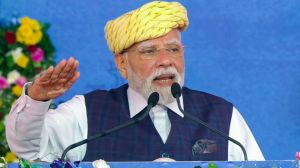Simplifying GST: The 6 big positives of GST implementation that makes the pain worthwhile
There is no doubt that the implementation of GST has had more than its fair share of problems. However, it is neither disastrous nor bringing the economy to a grinding halt as many people would want us to believe.
 FILE PHOTO: India’s Finance and Defence Minister Arun Jaitley attends a two-day meeting of the Goods and Services Tax (GST) Council, comprising federal and state finance ministers, in Srinagar May 18, 2017. (Reuters Photo)
FILE PHOTO: India’s Finance and Defence Minister Arun Jaitley attends a two-day meeting of the Goods and Services Tax (GST) Council, comprising federal and state finance ministers, in Srinagar May 18, 2017. (Reuters Photo)
The benefits of GST are far reaching despite some of the teething problems faced by the taxpayer. It is greatly beneficial for the state and the central exchequer and opens new avenues to look at growth.
The first and the most difficult quarter of GST implementation has shown that it is here to stay. There is no doubt that the implementation of GST has had more than its fair share of problems. However, it is neither disastrous nor bringing the economy to a grinding halt as many people would want us to believe. As a matter of fact, the benefits to the economy far outweigh the negatives if it is seen from the viewpoint of the exchequer. But, at the same time the negatives are too big to sweep under the carpet and say, “all is well.” We will look at the positives before delving into the negatives of this indirect nationwide tax after the first quarter of implementation.
Early introduction of GST gives greater flexibility to manage annual fiscal goals.
The Government did well to breeze through the home run of a very long drawn GST road that took decades from concept to planning stage. The execution was remarkably quick. As a matter of fact, it was ushered in earlier than expected in the July 2017 quarter instead of the September quarter. This gives it 3 months more to go through the learning curve. This also gives a longer period to sort out the teething problems before the end of the fiscal year.
Willingness and speed to manage change is noticeable
The most critical lessons of the GST introduction in every nation is learnt during the first three months. The changes happen based on those early lessons. Here too the amendments to the act have started in right earnest. Though they have yet not had the desired effects, they have begun and there is no complacency or policy paralysis seen. As a matter of fact, there is an enthusiasm to manage the change which is an extremely positive sign. The political leadership as well as the bureaucracy and private partners like GSTN are making tremendous effort to manage the change. And that is noticeable.
Eases tax collection and planning of the Centre and States
In July and September, the GST collected exceeded Rs 92,000 crores while in August 2017 it exceeded Rs 90,000 crores. Now it is fairly sure that Rs 90,000 crore plus of indirect taxes will be collected each month and this trend will continue for the entire year from the GSTR 3B. Besides the Centre the States know what is their share of taxes and what is the share of taxes is for other states. This will help advance planning of expenditure and lead to better governance.
Competitive federalism may boost growth
This will help each state create its own brand of infrastructure and investment policy. There maybe some states who would like to focus on increasing the manufacturing potential of their state. There could be yet others who focus on increasing the states’s consumption pattern by creating better infrastructure facilities. Despite the political differences, there is a keen desire among all parties today to bring change and development to the nation. Competitive federalism based on taxes earned could give a new dimension to India’s development story.
A macro view of tax payers and an insight on how they behave is emerging
The data analysis of the GST returns will soon throw up innumerable possibilities how to nurture and benefit from growth. Sooner or later, states will look into their own tax payers list and start ensuring better monitoring and compliance. Some states like Andhra Pradesh and Telangana are already moving in this direction. Others are bound to follow.
Improving the tax base of the nation
Today around 42 lakh taxpayers are generating the Rs 92,000 crore of indirect taxes. The tax base is small for a country of our size. But this is because we have a large informal economy and a very large unorganized sector. It is by bringing banking and tax payments under focus that this informal economy can be integrated. The Government is already making efforts to give banking access to the informal and unorganized sector. The GST enables both the Centre and the states to monitor tax payer behavior as well as the effect of taxes on the consumption of products and the tax payers. With a little effort we can easily raise the tax base to 50 lakh taxpayers in a year or two.
There are many other long term benefits like rationalization of tax departments and the manpower across states, the digitization of records that will lead to curbing of the parallel economy and reduction of prices once the tax regime stabilizes. But there are quite a few negatives that the rushed implantation of GST is also bringing. Keep watching this space. We will discuss those issues subsequently.
Photos



- 01
- 02
- 03
- 04
- 05




























